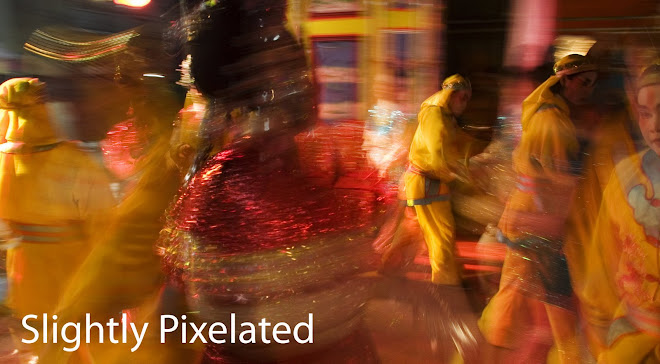
In Thailand, yellow is OK. It is the colour most associated with the country's much loved King. To wear yellow is to express one's allegiance and love of the monarchy. In this Buddhist Kingdom yellow is about as safe as you can get.
Or at least it used to be.
Nowadays wearing yellow also means you might be a supporter of the People's Alliance for Democracy (PAD), the anti-government movement that has occupied Government House and is baying for the 'head' of its third Prime Minister; Somchai Wongsawat (brother in law of deposed former PM, Thaksin Shinawatra). This means that if you were to meet somebody wearing red, the color of the pro-government (pro-Thaksin) United Front for Democracy Against Dictatorship (UDD), you could be considered an enemy and vice versa.
And when I say 'enemy', I choose the word carefully. To the 'yellows' of the PAD, the 'reds' of the UDD are not just 'the opposition'; another political group exercising their democratic right to a difference of opinion. No. The UDD, the reds, are the enemy. They are enemies of the monarchy. And to make their point perfectly clear, the 'yellows' beat a 'red' to death in a street battle in central Bangkok on the 2nd of September.
In the politically polarised Thailand of today it has become a case of politics by colors and woe betide you if, by inadvertance, you should don the wrong color in the morning. "Put me on a pick-up and drive me down to Bangkok right now and I'll kill all those PAD people," exclaimed, casually, a farmer in a village close to Khon Kaen earlier this week. He was a 'red'.
It used to be that Thais would watch the soap opera of local politics from the sidelines; chuckling at the sometimes absurd antics of their corrupt political elite, occasionally groaning in dispair as they watched another opportunity fall prey to the greed of their voracious 'dinosaur' politicians. Like in most countries, politics between elections was largely a spectator sport.
Not any more.
Like the dye from cheap cloth that stains the rest of your wardrobe in the wash, the new colour codes of Thai politics have begun to seep into everyday life. The presence of Queen Sirikit at the funeral of the PAD riot victim Angkana Radappanyawoot recently introduced light blue, the Queen's official colour, into the gamut of colours sported by the PAD. And this alongside the black shirts already being worn by PAD members to commemorate the violence of October 7th, now known as Black October.
This leaves a section of the population, those that would rather not choose sides, wondering what to wear in the morning. White and gray are probably the safest bets, although pink (also a royal colour), green and dark blue should be just fine too. Meanwhile those supporters of the PAD who are Chinese in origin must now foreswear red, a colour the Chinese traditionally associate with prosperity and happiness.
Apart from limiting one's choice of shirts in the morning, colour coded politics has a decidedly sinister aspect. The reduction of the opposition to a simple colour conveniently obscures the nuances of political hue and tone that each of the movements actually harbour. Seeing your opponent as 'red' or 'yellow' is dehumanising. It is much easier to fight a 'red' or a 'yellow' than a fellow Thai.

No comments:
Post a Comment